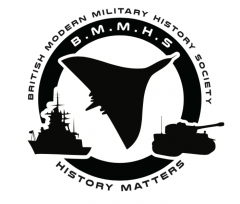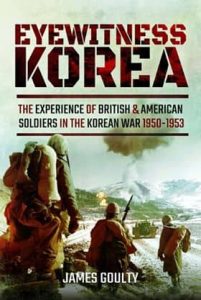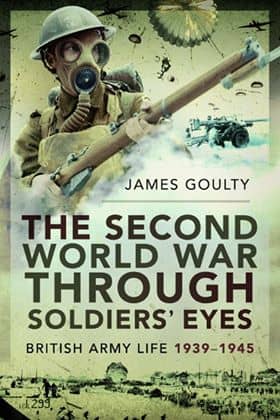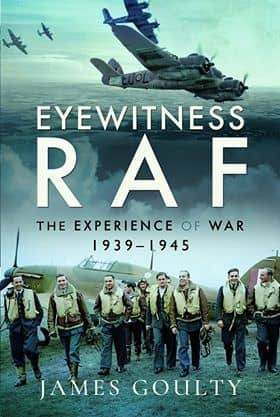The Russian Soldier during the Second World War
by James Goulty
Stalin's purges
The Red Army or RKKA (Rabochiy Krestyanskaya Armiya which translates as Red Army of Workers and Peasants to give its official title) entered the war on the back of the brutal purges perpetrated by Stalin in the late 1930s. These led to a cull of senior officers so that as many 41,218 may have been dismissed, imprisoned or executed, and in numerous cases replaced with upcoming, younger officers deemed as reliable. This included 15 out of 16 army commanders who were killed, along with 154 out of 186 divisional commanders and 401 out of 456 colonels. Additionally, Stalin reaffirmed the role of political commissars at divisional level and below, specifically appointed to enforce correct political attitudes and loyalty to the regime, and who could countermand the orders of military commanders.

According to historian Alan Clark, after the purges the Russian officer corps, ‘was crushed’ and ‘the Red Army was obedient to the point of witlessness; dutiful but without experience; stripped of political weight or ambition, at the expense of initiative, experiment, or the desire to innovate.’ The Russo-Finish War commenced in November 1939, a venture some analysists have compared with Putin’s current war against the Ukraine, and further exposed weaknesses in the Red Army, notably in staff work, organisation and standards of training, including co-operation between the arms. Yet it’s important to place the effect of the purges in context. As an account of the Battle of Kursk tells us, ‘the military was far from the finished article when the purges began and by [June 1941 when the Germans invaded the Soviet Union] around 80 per cent of purged officers had been reinstated.’ Moreover, during 1939-1941 the Red Army underwent a period of rapid growth, and the inexperience of its officer corps owed more to this than the purges. Typically, officers (especially staff officers) also enjoyed better conditions than the troops they commanded.
Despite the above, the Red Army had distinctive strengths, including the sheer numbers that it could draw upon. By July 1941 it could field over 300 divisions, albeit 88 weren’t fully combat ready. The hardihood of the average Soviet soldier was another asset. Mortar operator Mansur Abdulin, recalled how once during the war, despite being plagued by lice and the elements, he survived an entire month on the winter steppe without sleeping ‘in a proper dwelling… reduced to snatching bits of sleep in the open, in between bouts of fighting.’ To Germans engaged on the Eastern Front during 1941-1945, it appeared that: ‘Many an injury that would have been fatal to a Central European was endured and overcome’ by Soviet troops. Coupled with this they demonstrated ‘a singular kinship to nature’ that made them ‘an ideal fighter in forests, barren country, swamps’ and even the Arctic.
Initially most were Russian, Ukrainian or Belarusian, so essentially Slavic in character. As one infantryman opined this Slavic heritage ensured that: ‘It is very difficult to anger us, but there is no stopping us if you do.’ Less reliance was placed on non-Russian speaking ethnic groups from Central Asia, the Caucasus and Far East, principally owing to the language barrier, but as the war progressed, this recruitment policy was revised so that recruits from these groups were assimilated into the military. Throughout the war, mountain rifle divisions, for example, frequently relied on Georgians and other peoples from the Caucasus.

The disregard for death
Another typical characteristic of the Soviet soldier was a disregard for death, both that of comrades and his own potential demise. Such fatalism encouraged self-sacrifice, and helped when dealing with a typically high casualty rate. As historian Richard Overy outlined, despite the deprivations of their daily wartime existence, Soviet troops might even have experienced a profound sense of spirituality or ‘motivation of the soul, a longing for a beautiful death,’ a concept less out of place in Soviet Russia than in the rest of Europe, and something that shouldn’t be discounted. Linked with this was the intense form of patriotism encouraged by the Soviet regime. Shortly after the Nazi invasion, Foreign Minister Vyacheslav Molotov, announced during a speech that: ‘The Red Army and the whole nation will wage a victorious Patriotic War for our beloved country, for honour, for liberty…Our cause is just.’
"....we're not thinking about Stalin"
However, for many ordinary Soviet troops, who weren’t necessarily members of the Communist Party, Stalin and the motherland, were concepts that were often conflated to mean one and the same thing. For them a different form of patriotism emerged, that was equal to the official line, if not even more powerful than it. Infantryman Ivan Makarov explained that he and his comrades ‘… were not thinking about Stalin and the motherland between Leningrad and Vladivostock, nor did we find ourselves in a patriotic mood, as the press and propaganda would have us believe at the time.’ Rather they were thinking about their homes and families, and ‘this was the motherland we were defending from Nazism.’
Even so, the Communist Party sought to exert a strong influence over soldiers. In April 1943, while marching towards Stary Oskol, Abdulin, noted how troops were bombarded by propaganda slogans: ‘Everything for the Front! Everything for Victory!’ and ‘Death to the Fascist Invaders!’ Likewise, armour would often be daubed with uplifting inscriptions, including a T-34 tank from 45th Separate Tank Regiment, 8th Estonian Rifle Corps that bore the words: ‘Za Sovetskuyu Estoniyu’ (For the Estonian Soviet). Vasily Krysov spent much of his war commanding self-propelled guns (SPGs), and discovered that another method the regime employed to exert its hold over the military, was to induct combat veterans into the Communist Party, especially if they’d performed with distinction.
The commissars and political repression
As indicted, there was also the system of commissars, and as part of the political repression they embodied, there were numerous cases of them shooting commanders for supposedly failing to do their duty. Ordinary soldiers lived in fear of these individuals and the power that they held, which could see troops being shot for being guilty of ‘extraordinary events,’ a euphemism for anything deemed treasonous such as desertion, cowardice, obtaining a self-inflicted wound, even drunkenness. Despite this most were conditioned to respect their authority, and the personal example their commissar set as a warrior. Many commissars took a keen interest in the welfare of the troops, and this could also shape their relationship with them. The enemy deemed them important as well. When the Germans invaded, a notorious ‘Commissar Order’ was issued proclaiming that all Soviet political officers were to be handed over to the SS or the Secret Field Police, along with Jews and partisans.
As the war progressed, Stalin in an effort to boost morale downgraded the role of commissars, so that they were forced to relinquish much of their former power and adopt a more advisory role. However, troops still feared the special departments of the NKVD (Security Police) that similarly could deal with any soldier thought to be a traitor, coward or deserter. During the Battle of Stalingrad in 1942, for example, Order 227 was issued stipulating that there was to be no retreating. Abdulin explained how it ‘provided a strong psychological incentive for the men. As did the knowledge that there were special holding detachments in the rear, authorized to shoot anyone who actually did drop back.’ Alternatively, throughout the war unfortunate troops who defaulted might find themselves sent to a penal battalion, where only death in action or a wound offered release. In 1943 the special departments became SMERSH, based on the acronym Smert Shpionam (Death to Spies), principally tasked with counter-espionage/counter-intelligence. While trying to evacuate a severely wounded battery commander in July 1944, Krysov, had a disturbing encounter with a SMERSH officer, who placing a hand on his holster halted his SPG, and shouted: ‘You’re fleeing the battlefield, aren’t you?’ The accusation incensed Krysov: ‘Comrade Captain, I advise you to choose your words more carefully and not reach for your weapon-we’ve got enough of them inside the machine.’
Lessons learned from Finland
There were three types of divisions: infantry, cavalry and armoured, albeit in 1941 much of the Red Army’s tank strength was in reality employed in brigades attached to infantry armies rather than as a separate arm. Infantry divisions comprised of three regiments, each of three battalions, plus a reserve regiment of two battalions. Each battalion had three companies, 12 medium machine-guns, and a platoon of anti-tank guns and mortars. These were often referred to as Rifle Forces, Russian military tradition dictating that streltsi (riflemen) held an elite status compared with mere pyekhoty (infantry). Similarly, among infantrymen, razvedchiki (scouts) had special status. Makarov, who served as one, remembered they were granted privileges, including being able to wear their hair longer than normal and even sporting a moustache. Most troops were shaven headed to the point of baldness, it being believed that this was best for countering lice.
Lessons from Finland dictated that infantry divisions had a strength of 14,000 men, and like the Germans, although trucks were used, there was much reliance on horse drawn transport. Later in the war efforts were made to form motorised infantry divisions. Although seemingly immune from the terrain and climatic difficulties encountered on the Eastern Front, Soviet infantrymen from a German viewpoint often appeared lax when it came to conducting reconnaissance, and arguably didn’t make adequate use of the skills of their razvedchiki. However, welded together by communism, infantry units often achieved impressive feats, once the initial shock of the German invasion was over. Typically, mass was relied on to create a steam roller effect in attack that could be extremely potent when wedded to modern weaponry. As echelons advanced there would frequently be loud cheering, while those in rear ranks would fire into the air to accompany the fire of those in the assault. Additionally, Soviet troops invariably proved skilful at infiltration; content to conduct night operations; good at camouflage; plus employed deception methods ahead of offensives, including setting up dummy equipment to mislead the enemy about the importance of a particular sector.
Contrary to being an anachronism in twentieth century warfare, cavalry divisions of four regiments, each of two battalions, in fact had numerous advantages in Russia. Drawn from Cossacks and Kalmuks peoples, who were accomplished horsemen, they were trained to fight as infantry but employed their mounts to cover great distances, often over awkward terrain impassable to motor vehicles, and would tow mortars and light artillery pieces. Coupled with this, they typically proved adept at concealment and dispersion when the situation demanded it.
Soviet armoured forces on the other hand tended to demonstrate limited flexibility, and subordinate commanders often weren’t able to fully exploit tactically advantageous scenarios, even with the vastly superior numbers at their disposal as became common by 1943-1944. Set against this was the qualitative superiority of Soviet tank designs, notably the T-34 with its wide tracks that gave it increased mobility in difficult terrain, low silhouette and angled armoured plates for protection, plus capable armament, particularly when it was re-designed to mount an 85mm weapon. During the war it became customary for shock troops to ride into action on tanks. Termed tankoviy desant this was potentially costly but nonetheless an effective way of maintaining co-operation between infantry and armour.


Soviet artillery
Despite varying in efficiency during the war, Soviet artillery played a significant role in many actions, and by 1944-1945, the Red Army had become highly capable at massing and employing large numbers of guns. During the fighting for Berlin up to 375 guns and mortars were deployed on a kilometre of front to create a devastating barrage. The Red Army also developed a penchant for employing Katyushas, truck mounted multiple rocket launchers of relatively simple construction able to rapidly deliver a heavy concentration of fire. Also of significance were partisans, bands often incorporating troops who’d become detached from their parent formation. Typically, these irregular units were grouped together into brigades of at least 500 to 1000 strong, equipped with small arms, machine-guns, mortars and light artillery, and initially used to harass German rear areas, something that could tie down sizeable enemy resources. As the war continued, Stavka (Soviet High Command) exerted increased control over partisans, dropped supplies and radios, and so co-ordinated their operations with offensives by the Red Army.
Women in the Red Army
Women were employed in traditional non-combatant roles, such as doctors and nurses, plus around 30 per cent of the Osoaviakhim, a nationwide paramilitary organisation were female. However, as the war situation worsened combat roles were made available to them. The Red Army had fewer qualms about this than most contemporary armies, and notably women acted (often extremely efficiently and bravely) as combat medics, machine-gunners, snipers and served in anti-aircraft units, although they didn’t directly enter the infantry. Some who’d worked on tank production lines were also recruited as armoured personnel, especially tank drivers. There were even cases of husband and wife teams, such as Lieutenants Vera Orlova and Nikolai Orlov, who acted as commander and driver respectively on a JSU-152 assault gun in 1944.
Yet, even under the supposed equality of communism, life for women was fraught with challenges. Ukrainian born Lyudmila Pavlichenko, became a leading sniper with 309 official kills, although her actual tally was probably far higher. Dubbed ‘the Lynx,’ she served with 25th Chapayev Rifle Division, and outlined how she encountered sexism or at least a feeling amongst some male comrades that women weren’t welcome in combat positions. Even in the frontline, women had to potentially deal with the unwelcome advances of men, something Pavlichenko especially resented given she was married. As a female sniper, she was also only too well aware that if captured by the Germans she’d in all likelihood be gang raped before being executed.


Campaign wives
Alternatively, some became campaign wives, a phenomenon described by Krysov whereby women in the military took up with an officer, even if he was already married. These women were known as PPzh an abbreviation of ‘polevaya zhenshchina or campaign field wife… a play on the initials of the Russian sub-machine gun, the PPSh-41 [Pistolet-Pulemet Shpagina o1941g]. Having a campaign wife was a common thing at the front, beginning from company commander level. There was no such thing at platoon level, but in a company there might be a female medic or signaller.’
Coping with brutal conditions

Several factors enabled Soviet personnel to endure the brutal conditions on the Eastern Front. It’s worth contemplating the most pertinent, particularly with regard to men and women’s morale. This included mental coping mechanisms. When routinely faced with the horrors of war, Pavlichenko adopted the stratagem of ‘look and forget.’ Others including Abdulin, a Tartar from Siberia, found that while in the frontline thoughts of getting back home, in his case to a izba(peasant’s dwelling) with a relaxing bania (steam bathhouse) helped keep him going. Many soldiers were also superstitious, such as one SPG crew who always embraced one another before combat. Despite outward displays of religion being banned, many similarly had faith that fortified them, especially in tense moments.
The importance of comradeship
Likewise, comradeship was important, especially that forged in the frontline. In armoured units, for example, it was an unwritten rule that if a tank was on fire others would run to it to help the crewman escape, each man knowing that others in his unit would fight to save him. A comparable attitude could be found in other combat arms, notably in how infantrymen dealt with wounded comrades. Related to this, men from the same area were often grouped together within the same unit or served as part of the same gun crew etc. Of course under wartime conditions this wasn’t always practicable, but the idea was that this was good for maintaining morale. Units comprised from specific ethnic groups were also formed, including over 20 national brigades comprised from Lithuanians, Uzbekis, and Armenians among others with Russian officers.
Boosting a units spirits
A related factor that could boost a units’ spirits was being granted Guards status in recognition of courageous conduct. In January 1943, after its heroics at Stalingrad, 293rd Rifle Division was re-mustered into 66th Guards Rifle Division, as 193rd Guards Regiment, which as Abdulin who served with it outlined, was a considerable honour. The Communist state also allowed for a system of decorations, from Hero of the Soviet Union downwards, that could be awarded for bravery or distinguished service. The political authorities took these extremely seriously, but in contrast with Guards status it’s open to question how far common soldiers valued them. According to Makarov, those doing the actual fighting didn’t seem to be awarded many decorations, whereas, those in command or rear areas sometimes appeared to have a chest full of medals.

The threat of starvation
Another issue was hunger, and references to half-starved soldiers abound in memoirs by Red Army veterans. Many troops probably simply wondered where their next meal was to come from, and consequently anything edible that could be foraged in the field was valued, captured German foodstuffs being especially welcomed. Similarly, plundered German watches, weapons, notably the MG 42 machine-gun, and even supplies of clean underwear, were much prized. By the same token the prospect of a bath and change of uniform was relished when units spent time out of the line.
The Tankist Song
For many music was important, especially songs. Roman Skulski, a Pole conscripted into the Red Army on the outbreak of war, recalled learning the Tankist or Tankmen Song:
Try Tankista
Try Vesolykh Druga
Equipazh Mashyny Boyevoy
Or
Three Tankmen
Three Happy Comrades
Crew of a Fighting Machine

Revenge against the Fritzes
When the situation allowed, other popular leisure pursuits included gorodki (a popular Russian form of skittles), chess and sports such as volley ball and wrestling. In some cases units were even able to watch films. Letters provided a vital link with home, and had to be written on special paper that was folded into a triangle and passed onto the censor. For many smoking harsh, strong smelling Russian tobacco (makhorka) provided relaxation, and they rapidly learnt to make ‘goat legs’ or hand-rolled cigarettes, deftly around their little fingers. Similarly, troops weren’t necessarily shy from taking advantage of alcohol if available, albeit to be found intoxicated could result in them being shot.
Among most Soviet troops, revenge against the Germans or Fritzes as they were dubbed, in response to their behaviour was a powerful incentive to keep fighting and led to numerous atrocities being committed. In his memoir Bounden Duty (1990), former German officer Alexander Stahlberg, describes how Soviet tanks overran a medical tent crushing everyone and everything beneath their tracks. Likewise, Soviet troops were guilty of destroying property and attacking civilians, especially once they entered German soil. Krysov outlines the harrowing case of a twelve year old German girl who was raped by three sergeants from his unit. They were only given five days under arrest because it was felt that the Germans had treated Russian women exactly the same.
Not all Russian personnel fought for Russia
Not all Red Army personnel ended up fighting for Russia. Roman Skulski, for example, deserted as soon as he could and made his way to join Anders Army, the colloquial term for the Polish Armed Forces in the East under General Wladyslaw Anders. He subsequently volunteered for pilot training with the RAF, and journeyed to Britain. Contrastingly, others became Hilfswilliger or Hiwis, literally ‘volunteer helpers’ who’d been recruited from POWs or deserters and either served attached to German units, wearing German uniforms and eating the same rations or acted as labourers tasked with unpleasant jobs. To the Soviet authorities this was deeply disturbing, and such individuals were branded ‘former Russians’ and could expect to be executed. Likewise, no mercy was to be shown to members of the Russian Liberation Army, formed from former POWs by General Andrey Vlasov, who after being captured in 1942 had agreed to collaborate with the Nazis.
List of Sources
Sources
Alan Clark, Barbarossa: The Russian German Conflict 1941-1945 (London: Cassel, 2002), p. 42.
Lloyd Clark, Kursk: The Greatest Battle Eastern Front 1943 (London: Headline, 2011), p. 58.
Mansur Abdulin (Ed Artem Drabkin), Red Road from Stalingrad: Recollections of a Soviet Infantryman (Barnsley: Pen and Sword, 2004), p. 37.
Peter Tsouras (Ed), Fighting in Hell: The German Ordeal on the Eastern Front (Barnsley: Frontline Books,
2018), p. 36.
Ivan Philippovich Makarov, Born Under A Lucky Star: A Red Army Soldier’s Recollections of the Eastern
Front of World War II (Privately Published, 2022), p. 27.
Richard Overy, Russia’s War (London: Penguin, 1999), p. 216.
See for example: Clark, Kursk, p. 70.
Makarov, Born Under A Lucky Star, p. 40.
Abdulin, Red Road from Stalingrad, p. 31.
Vasily Krysov, Panzer Destroyer: Memoirs of a Red Army Tank Commander (Barnsley: Pen and Sword,
2001), pp. 143-144.
See: Lyudmila Pavlichenko, Lady Death: The Memoirs of Stalin’s Sniper (Barnsley: Greenhill Books, 2018).
Krysov, Panzer Destroyer, pp. 178-179.
Roman Vladimir Skulski, For Stalin and the Motherland: The Real Life Story of a Red Army Soldier
(Privately Published, 2019), p. 34.
About The Author
James Goulty holds a masters degree and doctorate in military history from the University of Leeds, and has a particular interest in the training and combat experience of ordinary soldiers during the world wars and Korean War.
He has published numerous articles and written 5 books for Pen and Sword Ltd, including The Second World War through Soldiers’ Eyes: British Army Life 1939-1945; and Eyewitness Korea: The Experience of British and American Soldiers in the Korean War 1950-1953.
Click to see full BMMHS event listing pages.
Contact us at info@bmmhs.org
Copyright © 2024 bmmhs.org – All Rights Reserved
Images © IWM & James Goulty







